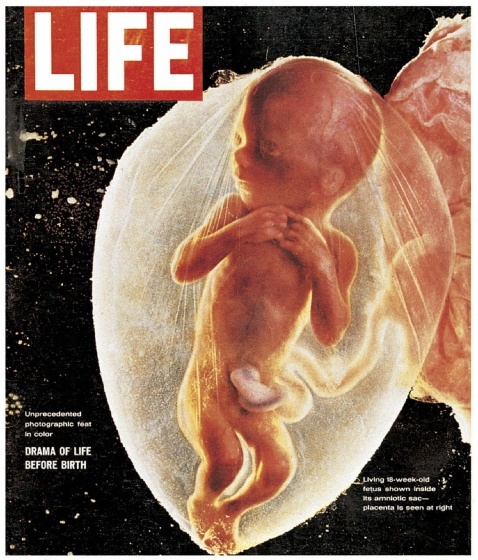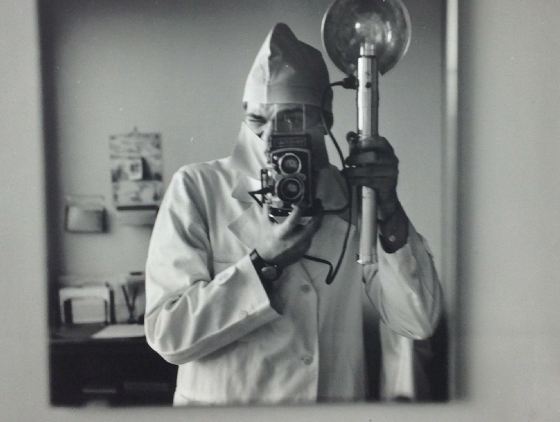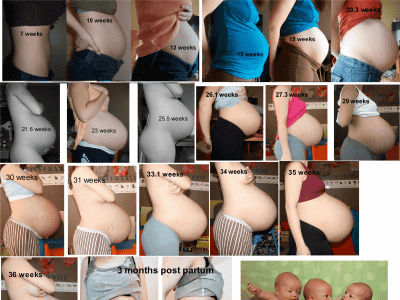How was the film “Foetus 18 Weeks” that clearly captured the fetus about 18 weeks after fertilization taken?

“Foetus 18 Weeks”, a photo taken in the 1960s and adorned a magazine cover, is a photo of a fetus about 18 weeks after fertilization. It looks as if it was taken inside a human body. Freelance writer Charlotte Janssen summarizes how “Foetus 18 Weeks” was filmed and how it was evaluated.
Foetus 18 Weeks: the greatest photograph of the 20th century? | Art and design | The Guardian
The magazine “ LIFE ” published in the United States had the highest sales, “Foetus 18 Weeks” published in April 1965 decorated the cover. The fetus photographed by Swedish photographer Renato Nilsson is wrapped in an amniotic sac and the umbilical cord is connected to the placenta. The black background is studded with stars and it looks as if the fetus is floating in space.

“Fetus 18 Weeks” was shot in a special way that seems impossible in 2019. In hospitals in the 1960s, fetal imaging was not common, and the picture taken by the first
Mr. Nilsson began to photograph the fetus in the womb using an endoscopic camera. However, depending on the size of the fetus, it was difficult to capture the whole image, so in the end it was decided to photograph the miscarried fetus.
Nilsson has been in close contact with Axel Ingelman Sandberg, director of a women's clinic at Sabatsburg Hospital in Stockholm, and has taken hundreds of fetal photos with a Hasselblad camera for about seven years since 1958. . As soon as the fetus that could be photographed or the embryo was ready, the hospital contacted Mr. Nilsson. It seems that the shooting had to be done within a few hours after the fetus was removed.
Mr. Nilsson set up a studio in the hospital and photographed the miscarried fetus in a water tank filled with a special liquid. Things placed in the aquarium will appear floating in the air. Mr. Nilsson photographed fetuses at various stages from sperm implantation up to 6 months, and created photographs that follow the birth of life in chronological order.
“The following photo shows Mr. Nilsson who is shooting.

The photo taken by Nilsson is published under the title '
Nilsson's step daughter Ann Failstrom said, “Nilsson wanted to make invisible things visible. And he showed us an amazing journey that unites all human beings. He would have wanted to give people the opportunity to see the inside of humans and see pictures that define humans as humans. '
Through the cover of LIFE and the success of A Child is Born, Mr. Nilsson became world famous. However, as the women's rib movement expanded in the United States from the late 1960s and discussions on reproductive rights intensified, the photos taken by Mr. Nilson became highly criticized. However, because Nilsson lived in Sweden, he did not know the fact that his photo was criticized.
It was in the 1980s that Mr. Nilsson knew the criticism of the world. Nilsson, who discovered that his photo was stolen on a poster against abortion during his trip to London, seemed shocked by the first recognition of public criticism. Nilsson appealed to the poster creator to stop using the photos without permission. However, there were posters around the world, such as Ireland and the United States, and it was not possible to completely prevent photos that had been stolen.
Just before his death at the age of 94 in 2017, Mr. Nilsson donated black-and-white images of the fetus to museums and public facilities so that people can still see the photos after his death. You can also see a picture of the fetus taken by Nilsson on Nilsson's official website .

Related Posts:







